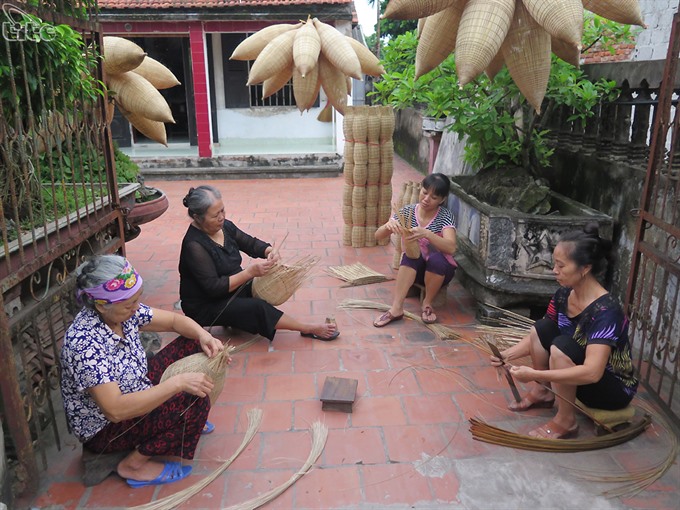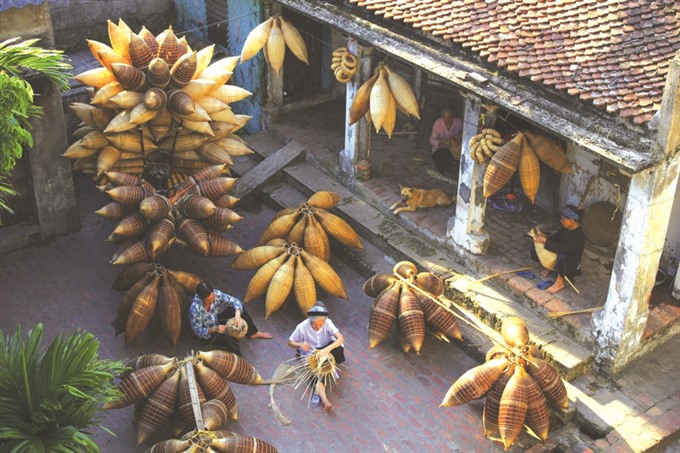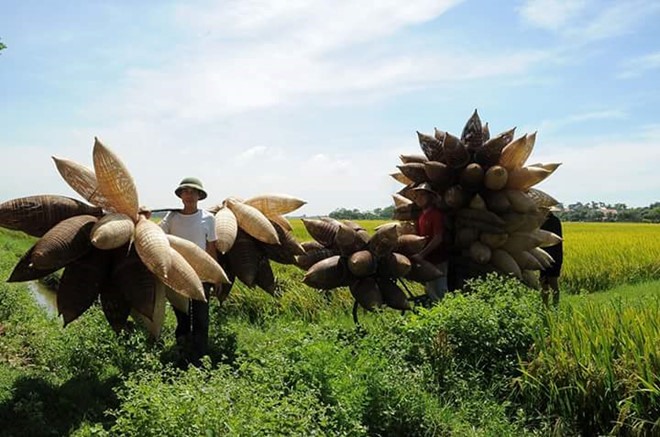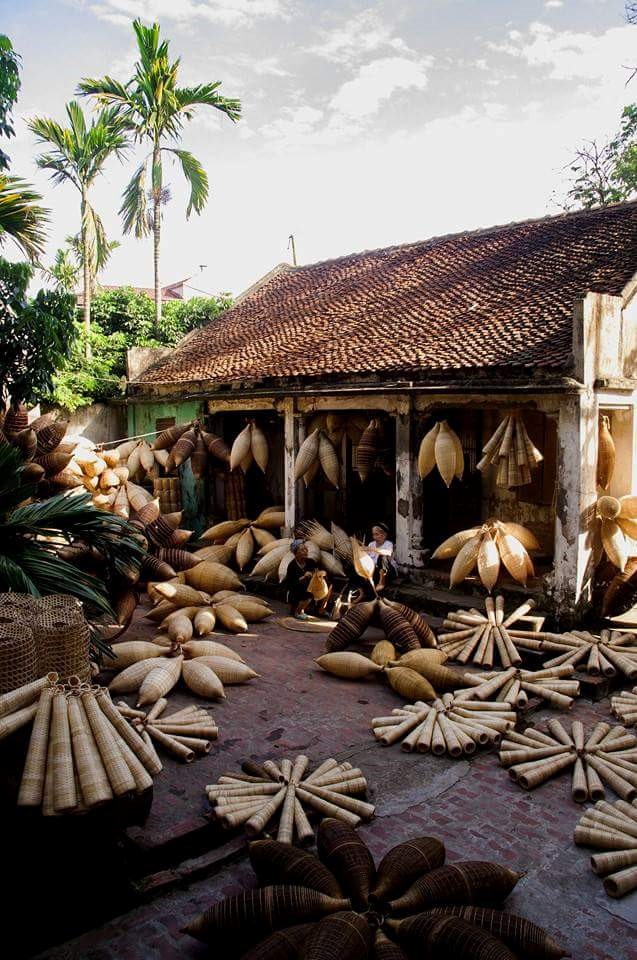Viet Nam News
By Moc Mien
Besides producing traditional products, trade villages have become appealing tourist spots, particularly for those fond of exploring the lives of local people.
About 60 kilometres from Ha Noi, in Thu Sy Commune, Tien Lu District, Hung Yen Province, the villagers of Thu Sy have been weaving fish traps for the past two centuries.
There, tourists can witness the process of making traditional fish traps, a fishing tool to some and a decoration to others.
 |
| Dab hands: Fish trap weaving techniques require skills and numerous steps. — Photo vietnamtourism.gov.vn |
As we turned off the provincial road, Thu Sy appeared as a northern countryside village with brownish tiled roofs and old three-compartment houses, creating a peaceful picture.
There are about 500 fish trap weavers in Thu Sy. The most developed hamlets are Noi Lang and Tat Vien. Thu Sy people have been doing this trade for a long time. The elders in the village say Thu Sy people learned fish trap weaving more than two centuries ago.
Nguyen Thi Dan from Thu Sy village said: “Our village’s communal house worships Tutelary Goddess Nguyen Thi Hue. I was told by my forefathers that she was the one who taught us the trade of fish trap weaving. We now weave fish and shrimp traps.”
 |
| Experience: Thu Sy fish trap weaving village has been a trade village for the past two centuries. — Photo baodulich.net.vn |
A fish trap is a traditional fishing tool of farmers, mostly in the northern plains of Viet Nam. It is shaped like a cylinder with tapering ends and has a small opening with a lid. It takes a skilled weaver about an hour to complete a fish trap. Afterwards, the trap is fumigated above a stove to make it more durable. Made by skilled locals, fish traps are sent to northern provinces and cities and exported to some other countries.
Of the 500 fish trap weaving artisans in the village, Luong Son Bac is among the oldest and most skilled. Seeing how fast he moved his hands and listening to his laugh during our conversation, we could not believe he was more than 80 years old.
 |
| Job done: A Thu Sy villager carries fish traps. — Photo zing.vn |
Bac said a weaver must choose aged bamboo to make durable and nice fish traps. Fish trap weaving require skills and the combination of numerous steps. Each member of his family is in charge of one particular step. Some cleave bamboo, while others sharpen it.
After all necessary materials are prepared, the weaving process starts. It is easiest to weave the lid. The rim and the end of the fish trap are the most difficult to weave.
Fish trap weaving is the main source of income for Thu Sy villagers. A white-colour fish trap sells for VND20,000-25,000, while a red brown fumigated fish trap goes for VND30,000-40,000.
 |
| Fishing for profits: Fish trap weaving is the main source of income of Thu Sy villagers. — Photo zing.vn |
Apart from fish traps, local people also weave fish pots to sell them in other districts and surrounding provinces to farmers who go fishing and catch crabs in paddy fields.
As the world advances, traditions tend to be overlooked. Fish traps are being forgotten gradually by modern people, but thanks to the skill and persistence of the people of trade villages, today’s generations can learn about the culture and history of Viet Nam.
Visiting Thu Sy trade village, tourists can experience fish trap weaving to understand the daily life and job of local people and a valuable traditional trade of Viet Nam. — VNS